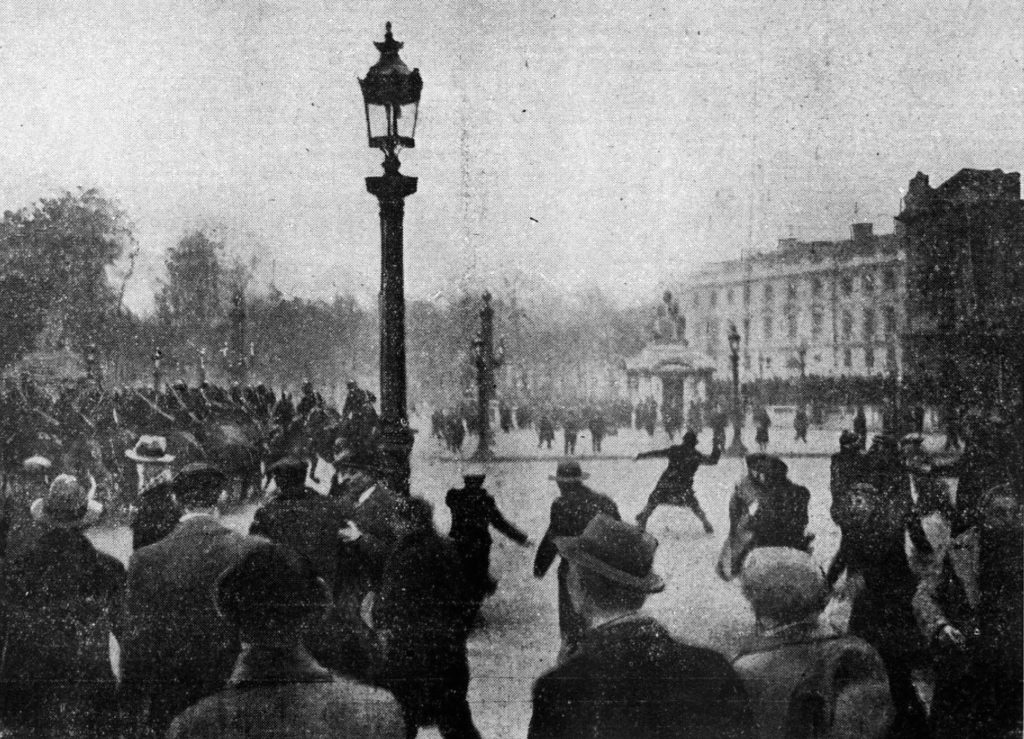How to Fight Fascists

The scene was, as of yesterday, eerily familiar. A throng of right-wing extremists, including multiple paramilitary groups, rioted at the gates of the legislature. The setting was Paris; the date 6 February 1934. Though the anti-democratic insurgents failed to breach the Palais Bourbon (where the Chamber of Deputies was meeting), they unleashed the worst night of political violence in France since the assault on the Commune in 1871.
We’re going to be getting a lot of commentary on beer hall putsches and marches on Rome (not unwarranted), but the events of 6 February 1934 have some important lessons for us on what might and what should come after 6 January 2021 (indeed, French historians started raising these parallels yesterday afternoon).
In the immediate aftermath of the Paris riots, the center-left Daladier resigned as head of government in favor of the conservative Doumergue. But by 12 February, the major unions organized a massive, nationwide, general strike. This laid the groundwork for the Popular Front coalition, which took power in May under the leadership of socialist Léon Blum, and the formation of a number of popular antifascist groups.
The parliamentary resolution to the crisis led to a belief that France had shown itself on 6 February to be immune to the lure of fascism. The riot had ushered in a newly urgent defense of the Republic and of France’s dedication to the revolutionary rights and values of 1789—and, indeed, French fascist groups were never able to take power like their Italian and German counterparts. This interpretation, however comforting, misses quite a few of the dynamics of French politics in the 1930s and after (to dive into the scholarly debate, look here).
And thus, Lesson One: anti-government and paramilitary groups, once emboldened, are hard to defang. True, France never saw a unified, homegrown fascist success. Yet defeat and occupation by the Nazis in 1940 created opportunities for quite a few willing collaborators—not least among Vichy officials. One of France’s lucky breaks on the fascism front was that there were multiple fascist groups who failed to coalesce around a single charismatic leader—and who disdained governmental participation to the extent that they never gained a foothold within the Republic’s institutions. Yesterday’s mob has their dear leader (for now) and certainly has seditious cheerleaders within Congress.
Lesson Two comes from the Popular Front—and its collapse within a couple of years. Blum did score some victories for workers (collective bargaining, the 40-hour workweek), but other reforms faltered or never made it to the parliamentary floor. The Popular Front’s demise has been linked to its timidity in pushing progressive ideas—Daniel Guérin called it a “missed revolution” in the title of his memoir. Certainly, the tepid response to fascism’s rise in Spain cost the Popular Front its majority. In other words, a leftist coalition coming to power after an extreme-right coup attempt does itself no favors by hewing to moderation.
Lesson Three follows from the second and it relates to exactly what or whose “Republic” was saved in the moment. France in 1934 was in the twilight of its Third Republic—a system that had some truly mythic PR, but was ultimately riddled with inequality. Women wouldn’t be allowed to vote, for example, until the end of WWII. And, of course, there was the virulent racism of the empire. One of Blum’s failed projects was to extend citizenship to a limited number of Algerians—but even this miniscule step towards allowing political participation by colonial subjects was buried under the protests and threats of white settlers and their domestic allies. The Republic defended on 6 February hardly lived up to its ideals and continued to serve primarily the interests of white male elites.
Our own Republic, provided we actually do keep it over the next few weeks, likewise fails to live up to its visions of freedom and prosperity for all. The dynamics of the (lack of) police response yesterday make the systemic racism of our criminal justice system crystal clear yet again. The shock and confusion from commentators as the riot played out further emphasized that our society is conditioned to recognize only certain types of “protest” as legitimate—white bodies are marked with a blazing impunity.
Taken together, the three lessons of 6 February 1934 teach us that this was far from the final fight. Victory requires unflinching censure of those who perpetrated and those who encouraged yesterday’s attack on our country. Victory requires pushing hard and fast for a progressive agenda that actually starts to make a difference in people’s lives and that radically undermines the structures of white supremacy our institutions rest on. True victory, in short, requires forging a Republic that is worthy of saving when it next comes under attack.


